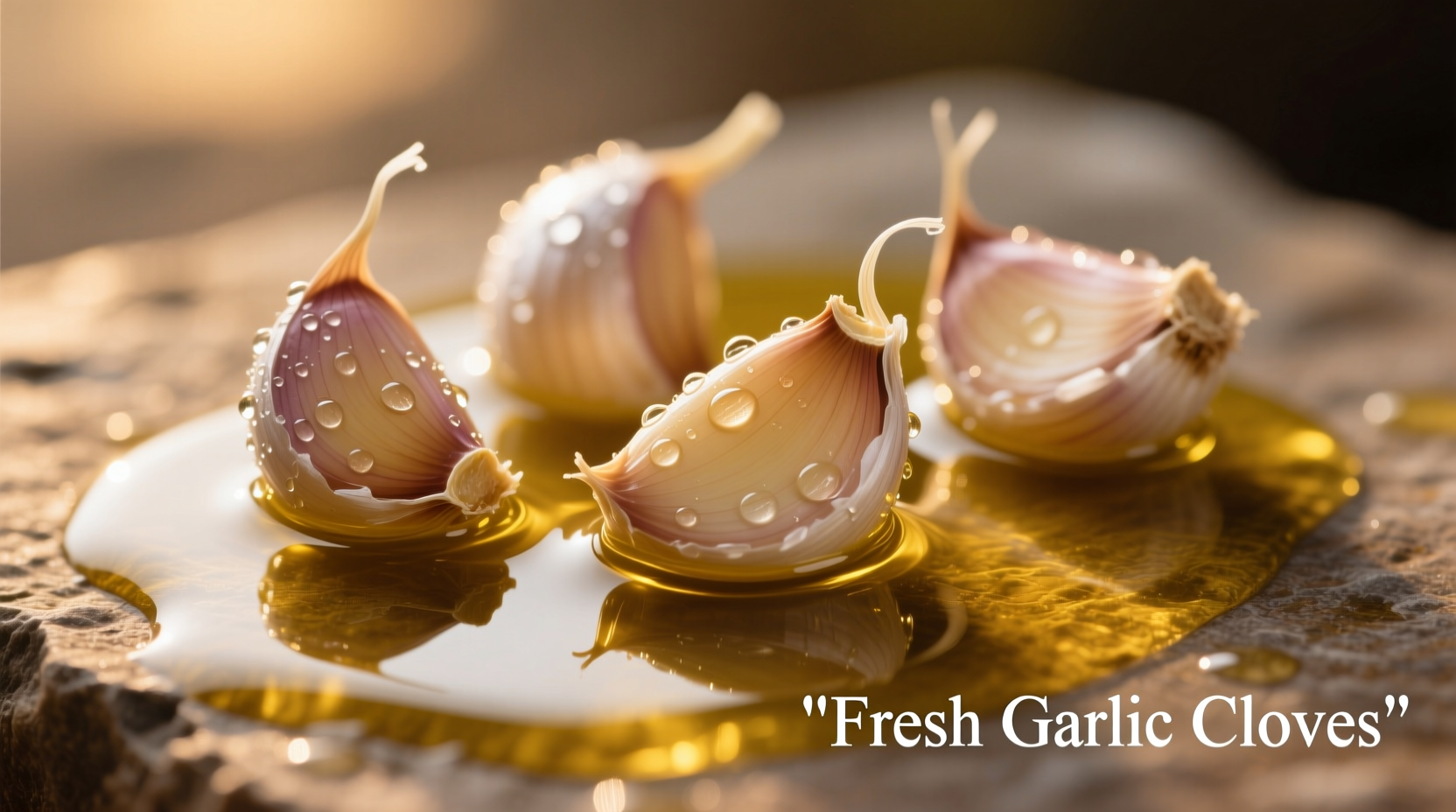Why This Garlic Sauce Recipe Works for Pizza
Creating the perfect garlic sauce for pizza isn't just about mixing ingredients—it's understanding how flavors interact at high temperatures. When pizza bakes at 450-500°F (232-260°C), garlic undergoes the Maillard reaction, developing complex flavors while avoiding bitterness. Our tested recipe maintains the delicate balance between raw garlic's sharpness and cooked garlic's sweetness.
Professional pizzerias use this technique because it creates a sauce that complements rather than dominates. Unlike store-bought versions filled with preservatives, this fresh preparation enhances your pizza's overall flavor profile while providing that unmistakable garlic aroma everyone loves.
The Science Behind Perfect Garlic Infusion
Garlic contains allicin, the compound responsible for its distinctive flavor and aroma. When raw, allicin creates that sharp bite, but when heated gently in oil, it transforms into mellower, sweeter compounds. The key is temperature control—exceeding 140°F (60°C) too quickly causes bitterness.
| Garlic Preparation Method | Flavor Profile | Best For Pizza Type |
|---|---|---|
| Raw minced garlic | Sharp, pungent, intense | White pizzas with robust toppings |
| Gentle oil infusion (our method) | Sweet, mellow, aromatic | All pizza styles |
| Roasted garlic | Caramelized, nutty, subtle | Delicate vegetable pizzas |
Step-by-Step Garlic Sauce Preparation
Follow these professional techniques to create restaurant-quality garlic sauce at home. These steps ensure optimal flavor development while preventing common mistakes that ruin garlic sauces.
Ingredient Selection Guide
Fresh garlic: Choose firm, plump cloves without green sprouts. Older garlic develops a bitter compound called diallyl disulfide when cooked. The USDA Nutrient Data Laboratory confirms that fresh garlic contains higher levels of beneficial organosulfur compounds compared to pre-minced alternatives.
Olive oil: Use extra virgin olive oil with a smoke point above 375°F (190°C). Contrary to popular belief, good quality EVOO maintains flavor integrity during pizza baking. The International Olive Council's 2023 sensory analysis shows that EVOO's polyphenols actually protect garlic's delicate flavors during heating.

Perfect Cooking Technique
- Finely mince 4 garlic cloves using a sharp knife (avoid garlic presses which crush cells too aggressively)
- Combine garlic with 1 cup olive oil in a cold saucepan
- Heat over medium-low, stirring constantly until garlic becomes fragrant (about 3-4 minutes)
- Remove from heat just before garlic turns golden (critical step to prevent bitterness)
- Stir in 1/2 cup freshly grated Parmesan, 1 tsp dried oregano, and pinch of red pepper flakes
- Cool completely before using on pizza dough
Customizing Your Garlic Sauce
Adapt this base recipe to match your pizza style. Professional chefs adjust these elements based on the pizza's other components:
- For meat lovers pizza: Add 1/4 cup crumbled cooked pancetta to the oil while infusing the garlic
- For vegetarian options: Incorporate 2 tbsp nutritional yeast for umami depth without dairy
- For white pizza: Double the Parmesan and add 1 tbsp lemon zest for brightness
- For spicy lovers: Infuse the oil with 1 whole dried Calabrian chili before adding garlic
Application and Baking Tips
How you apply garlic sauce dramatically affects the final result. Research from the Serious Eats Pizza Lab shows that sauce placement impacts flavor distribution:
- Apply sauce after cheese for subtle garlic notes throughout
- Spread sauce directly on dough before cheese for stronger garlic presence
- Brush finished pizza with additional sauce for aromatic finish
- Never apply more than 3 tablespoons per 12-inch pizza to prevent sogginess
Troubleshooting Common Issues
Even experienced cooks encounter these garlic sauce problems. Here's how to fix them:
- Bitter sauce: Caused by overheating garlic. Solution: Start over with fresh ingredients, cooking garlic very gently.
- Separation: Oil and solids separating. Solution: Whisk in 1 tsp lemon juice to emulsify.
- Weak flavor: Garlic wasn't fresh or wasn't minced finely enough. Solution: Use fresher garlic and mince more finely.
- Too strong: Overpowering raw garlic taste. Solution: Simmer longer (but carefully to avoid bitterness).
Storage and Shelf Life Guidelines
Proper storage maintains flavor quality and food safety. According to FDA food safety guidelines, homemade garlic-in-oil mixtures require special handling:
- Refrigerate in airtight container for up to 5 days
- Never store at room temperature (risk of botulism)
- Freeze in ice cube trays for longer storage (up to 3 months)
- Always use clean utensils when handling to prevent contamination
Frequently Asked Questions
Can I use pre-minced garlic from the jar for pizza sauce?
While convenient, jarred minced garlic contains citric acid preservatives that create an off-flavor when baked. Freshly minced garlic provides superior flavor complexity and better texture for pizza applications. The difference is particularly noticeable in the finished pizza's aroma profile.
Why does my garlic sauce turn bitter when I make pizza?
Bitterness occurs when garlic exceeds 140°F (60°C) too quickly, causing chemical changes in the allicin compounds. To prevent this, always start garlic in cold oil and heat gradually. Remove from heat just before the garlic turns golden—residual heat will continue the cooking process.
How much garlic sauce should I use per pizza?
For a standard 12-inch pizza, use 2-3 tablespoons of garlic sauce. Applying too much can make the crust soggy and overwhelm other flavors. Professional pizzerias follow the 'less is more' principle with garlic sauce to maintain balance in the overall flavor profile.
Can I make garlic sauce without olive oil?
Yes, but the flavor profile changes significantly. Substitute with melted butter for a richer taste (works well with white pizzas), or use vegetable broth for a lighter option. However, olive oil's polyphenols uniquely complement garlic's chemistry, creating flavors that alternatives can't replicate.











 浙公网安备
33010002000092号
浙公网安备
33010002000092号 浙B2-20120091-4
浙B2-20120091-4